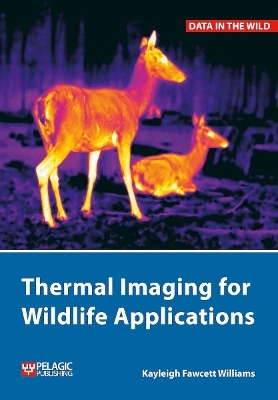
Thermal Imaging for Wildlife Applications
Pelagic Publishing (Verlag)
978-1-78427-416-0 (ISBN)
Thermal imaging is exciting technology that can act as a powerful tool in a growing number of wildlife research, ecology and management applications. It allows us to see things difficult or even impossible to detect using conventional methods, opening a window onto the worlds of cryptic, nocturnal, secretive and otherwise challenging species. This can offer a range of benefits such as increased accuracy, reduced costs, better efficiency and improvements to health and safety conditions. Yet the relevant information is often largely inaccessible to most wildlife professionals.
Thermal Imaging for Wildlife Applications brings together key findings from academic research and applied field protocols, along with the author’s wealth of practical experience, to inform and guide the reader in an approachable and understandable format. This comprehensive handbook includes chapters covering the fundamentals of the technology, methods, equipment and detailed discussion of application types, as well as specific sections that focus on terrestrial mammals, bats, marine mammals and birds.
The final chapter explores some of the many potential future uses of thermal imaging, before a thorough literature overview and a list of resources ensure that this will be the standard work on the subject for years to come.
Kayleigh Fawcett Williams is a wildlife ecologist and thermographer with a PhD in bat bioacoustics. She has worked in academic, consulting and volunteer sectors, and her career with wildlife has brought her into contact with a diverse range of species around the world. She now shares her expertise through training, consulting and support work at Wildlifetek.
Contents
List of Figures
Preface
Acknowledgements
1. Introduction
1.1 How it works
1.2 History of thermal imaging for wildlife applications
1.3 Advantages of using thermal imaging
1.4 Challenges and limitations of thermal imaging
2. Foundations
2.1 Setting the thermal scene
2.2 Detectability
3. Methods
3.1 Operations workflow
3.2 Levels of use
3.3 Deployment methods
3.4 Combining techniques
3.5 Expertise requirements
4. Equipment
4.1 Important specifications for device selection
4.2 Accessories
4.3 Calibration
5. Application Types
5.1 Detection, classification and counting
5.2 Human–wildlife interactions
5.3 Behavioural studies
5.4 Health and rehabilitation
5.5 Thermoregulation, thermal biology and thermal ecology
5.6 Communication, education and awareness
6. Wildlife Applications
6.1 Mammals
6.2 Birds
6.3 Bats
6.4 Marine mammals
7. Future Possibilities
7.1 Further development of thermal-imaging technologies
7.2 Automation
7.3 Data storage and handling
7.4 Sustainability
Appendix
Tables
Resources
Supplier Directory
References
Index
| Erscheinungsdatum | 26.10.2023 |
|---|---|
| Reihe/Serie | Data in the Wild |
| Zusatzinfo | 6 Tables, black and white; 19 Figures |
| Verlagsort | Exeter |
| Sprache | englisch |
| Maße | 170 x 244 mm |
| Gewicht | 460 g |
| Themenwelt | Sachbuch/Ratgeber ► Natur / Technik ► Natur / Ökologie |
| Naturwissenschaften ► Biologie ► Ökologie / Naturschutz | |
| Naturwissenschaften ► Biologie ► Zoologie | |
| Technik | |
| ISBN-10 | 1-78427-416-X / 178427416X |
| ISBN-13 | 978-1-78427-416-0 / 9781784274160 |
| Zustand | Neuware |
| Haben Sie eine Frage zum Produkt? |
aus dem Bereich


